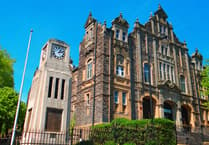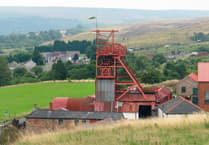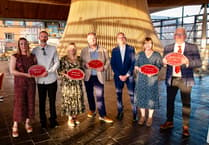PLANS have been unveiled to commemorate a landmark political protest and document the history of a key building in Blaenavon.
Blaenavon Town Council is behind a project to make and install two history panels in the town – one marking the use of the Ironwork’s company shop and the other remembering a political protest which followed a 19th century election.
Marking the 150th anniversary of the general election riot of 1868, a planning application has been submitted by the town council seeking permission for a history board on a wall of The Lion Hotel in Broad Street.
Rioters descended on the hotel following the election result in November, 1868, smashing windows and ransacking the home.
Books, furniture and bedding were reportedly thrown out into Broad Street and burned in a bonfire.
Hundreds took part in the protest held over the low numbers of working class men who were eligible to vote.
Despite Blaenavon having a population of more than 9,000, it had an electorate of just 240 men.
They voted strongly in favour of the Liberal candidate but the Monmouthshire result, with a much bigger electorate, swung the vote in favour of the Conservatives.
Under the plans the panel will “commemorate and inform the public about the political protest which followed a significant 19th century election.”
It will be A1 size which is around 850mm wide and 600mm high, and of a similar design to the other information boards within the Blaenavon Industrial Landscape World Heritage site.
“This proposal would inform visitors and residents alike about a key piece of social history of the town,” a design and access statement says.
“As such it would significantly enhance the public experience of this building and increase their interaction with it.”
As part of the project, the town council has also submitted a separate application for a history panel on a wall of the former Ironwork’s company shop in North Street, now occupied by Caddick’s Builders.
The simple T-shaped building was made from stone and thought to date back to the early 1820s.
The panel, of the same size and design, will be located on the west wall of the building under the plans.
A design and access statement adds: “These proposals will have a positive impact upon the cultural value of the building by providing additional historical and cultural interpretation.
“Consequently, the benefits to the historic environment generally are significantly greater than the slight adverse impact upon the setting of the original Blaenavon town hall and the general streetscape, given the location of the panel.”
Both boards will also be reversible.





Comments
This article has no comments yet. Be the first to leave a comment.